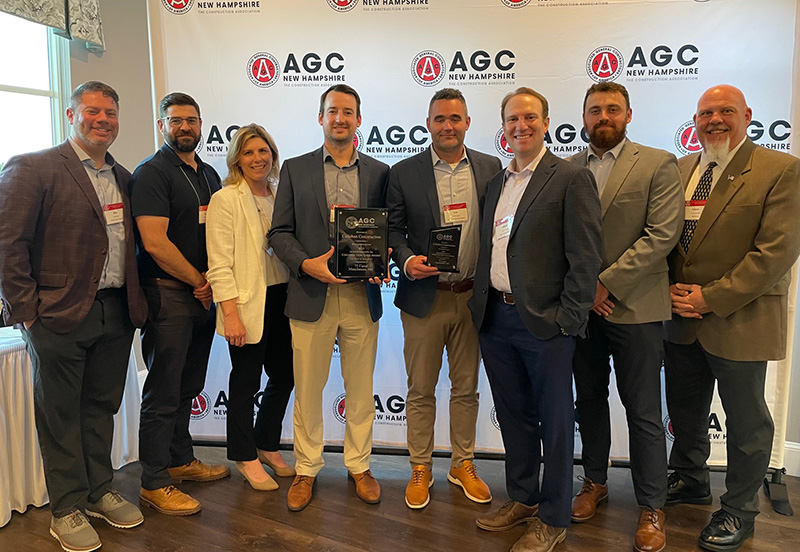News: Construction Design & Engineering
Posted: July 17, 2014
Growing pains - A positive sign for A&E firms
According to DiCicco, Gulman & Company LLP's (DGC's) 2014 Architecture and Engineering (A&E) Survey, A&E firms have taken full advantage of an improving economy. As backlog levels increase, many firms are beginning to face challenges they haven't seen in years, such as staff shortages and operational efficiency issues. While these growing pains are an obstacle to future growth, effectively managing them is a welcome challenge.
DGC's annual survey benchmarks the 2013 operating performance of over 40 A&E firms headquartered in the Northeast. The survey finds that firm profits increased 9% in 2013 to 10.2% of net service revenue. While the Northeast continues to lag behind much of the country in design and construction activity, geographic diversification has allowed many firms to capitalize on increasing demand for services in other parts of the U.S.
As firm leaders look to profitably manage growth, key performance indicators (KPIs) can be a useful tool. KPIs allow firm leaders to assess, and respond to, the underlying factors that drive growth and profitability. Three of the most important KPIs highlighted in the survey are the utilization rate, the direct labor multiplier, and the overhead rate.
Utilization Rate
The utilization rate is an indicator of a how well a firm is managing its most valuable asset, its people. Utilization measures the time people spend on projects in relation to total hours worked. When it is measured on a firm-wide basis, it is an indicator of whether a firm has the right number of people in the right spots within the organization.
For 2013, the average utilization rate for architecture firms declined two and half points to 63.2%, but increased slightly to 62.7% for engineering firms. Architecture firms were running leaner than their engineering counterparts over the past few years which contributed to a higher than normal utilization rate. 63.2% is closer to the historical average for the industry. It should be noted however that high performing A&E firms continue to target between 65% and 67% for overall firm utilization.
Direct Labor Multiplier
The direct labor multiplier assesses staff productivity and project profitability by measuring the net service revenue generated for each dollar of direct labor spent on a project. The survey results show that the multiplier stayed relatively flat for architecture firms, coming in at 3.06. For engineering firms, the multiplier increased a modest 3% to 2.97. These findings reveal that commoditization of services and heightened competition continue to put significant downward pressure on fees. In addition, the erosion of standard of care expectations has increased scope without a corresponding increase in fees.
Firms recognize that increasing staff productivity is critical to maintaining a healthy profit margin. To accomplish this, they are investing in project management training and new information and communication systems. Firms are also holding more frequent project review meetings to increase staff's budget and scope awareness.
Overhead Rate
The overhead rate equals the ratio of non-chargeable labor and other G&A costs to project related labor. This KPI allows firm leaders to quickly assess how their overhead structure compares to historical results and industry trends. It is also an important piece to consider as firms set bill rates and project fees.
The average overhead rate for architecture firms has increased over the last two years, coming in at 180.5% of direct labor for 2013. This is more in line with the historical averages achieved before the recession. Engineering firms continued to benefit from lower overhead rates in 2013, primarily as a result of increased utilization. The 2013 average of 159.6% is the low watermark in the survey's history.
Conclusion
In summary, while the economic and competitive landscape continues to change, the business fundamentals of the A&E industry are still very much the same: Develop and retain the best and brightest people, diversify into a few strategic markets, keep a close eye on KPIs and exceed clients' expectations with exceptional service. These are the keys to generating sustainable growth.
David Sullivan, CPA and Chad DaGraca, CPA are partners at DiCicco, Gulman & Co. LLP, Woburn, Mass.
MORE FROM Construction Design & Engineering
Nobis Group awards Robinson and Moreira STEM scholarships
Concord, NH Nobis Group, a 100% employee-owned consulting firm specializing in engineering and environmental solutions across the Northeast, has named the recipients of its 2025 STEM Scholarship: Andie Moreira of

Columns and Thought Leadership

Ask the Electrician: Is summer a prime time for commercial electrical maintenance?
The answer is “Yes!” While January marks the official new year, many businesses view September as a fresh start. This makes summer an ideal time for commercial property owners to schedule long-term electrical maintenance projects.

The design-build advantage: Integrated interior design solutions - by Parker Snyder
When it comes to corporate interior spaces for both commercial and industrial projects, partnering with a design-build firm with in-house interior design services can offer clients many benefits. Unlike traditional delivery methods where interior designers operate independently from the design and construction teams, often creating a longer project timeline as cost negotiations and revisions ensue

Careers in Construction Month focus on training and safety - by Joe Camilo
October is Careers in Construction Month, and rarely has it been more consequential. According to our chapter’s national parent organization, the construction industry needs to attract half-a-million new workers in the coming year to meet demand. Addressing that need is a huge job, but we at ABC MA are trying to do our part.

The rise of incubators and co-working spaces: The latest in life sciences - by Matt Combs
In recent years, the life science industry has witnessed a shift in how companies operate and innovate. One of the key driving forces behind this transformation is the emergence of incubators and co-working spaces specifically tailored to meet the unique budget and schedule needs of startups.







.png)